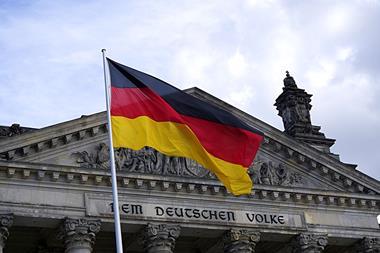UK - The cost of insuring pension schemes could rise by a quarter next year for UK employers as low government bond yields cause the Pension Protection Fund (PPF) to hike levies, consultancy Towers Watson has said.
Joanne Shepard, senior consultant, said: "Gilt yields are much lower now than they were five years ago, so average underfunding levels are going to look worse, and that will make levies bigger."
Data for the year to March 2013 will replace year to March 2008 numbers in the equation used to calculate levies for 2013-14, according to the PPF's five-year smoothing formula, she said.
"Ironically, smoothing is leading to some very bumpy outcomes," said Shepard.
"The increases that are on the cards can be serious money for the sponsors of large schemes whose levy bills are already hundreds of thousands, and in some cases millions, of pounds each year."
PPF levies are calculated by putting data into a formula, including scheme liabilities, funding level and a measure of risk that the employer will become insolvent.
The funding level is smoothed over a five-year period and stressed to reflect investment strategy risk, the consultancy said.
The funding data is very sensitive to gilt yields, which have been at record lows recently.
Just how much the charges do increase next year depends how market conditions change from now until the end of March next year, and on schemes' individual circumstances, Towers Watson said.
"However, based on current market conditions, Towers Watson suggests it would not be uncommon for levies to increase by 25% or more if, as intended, the current levy formula remains in place," it said.
Even if gilt yields did rise strongly and assets performed well over the next nine months, big increases would still be likely for many schemes, it warned.
And even though the PPF has pledged not to make any major changes to its rules before 2015, Towers Watson said it could be forced to do so.
"Towers Watson's analysis suggests the PPF may have to choose between revisiting a formula that it had aimed to keep unchanged until 2015 and collecting significantly more from employers," it said.
"Legislation prevents the PPF from increasing its total expected revenue from levies by more than 25% in any one year. If applying the same formula after funding levels have fallen would have this big an impact, the PPF would need to revise its plans."
The impact of lower funding levels may be offset for some employers by new security pledges, improvements in the sponsor's D&B score or changes in pension fund asset investment, the firm said.
D&B scores determine the assumed risk that an employer will soon become insolvent.
But Shepard said other employers should think sooner rather than later how to reduce the impact of worse funding levels.
"For example," she said, "the PPF now looks at D&B scores at the end of each month in order to assess an employer's strength over the year, so the sooner action is taken the more impact it could have."












No comments yet